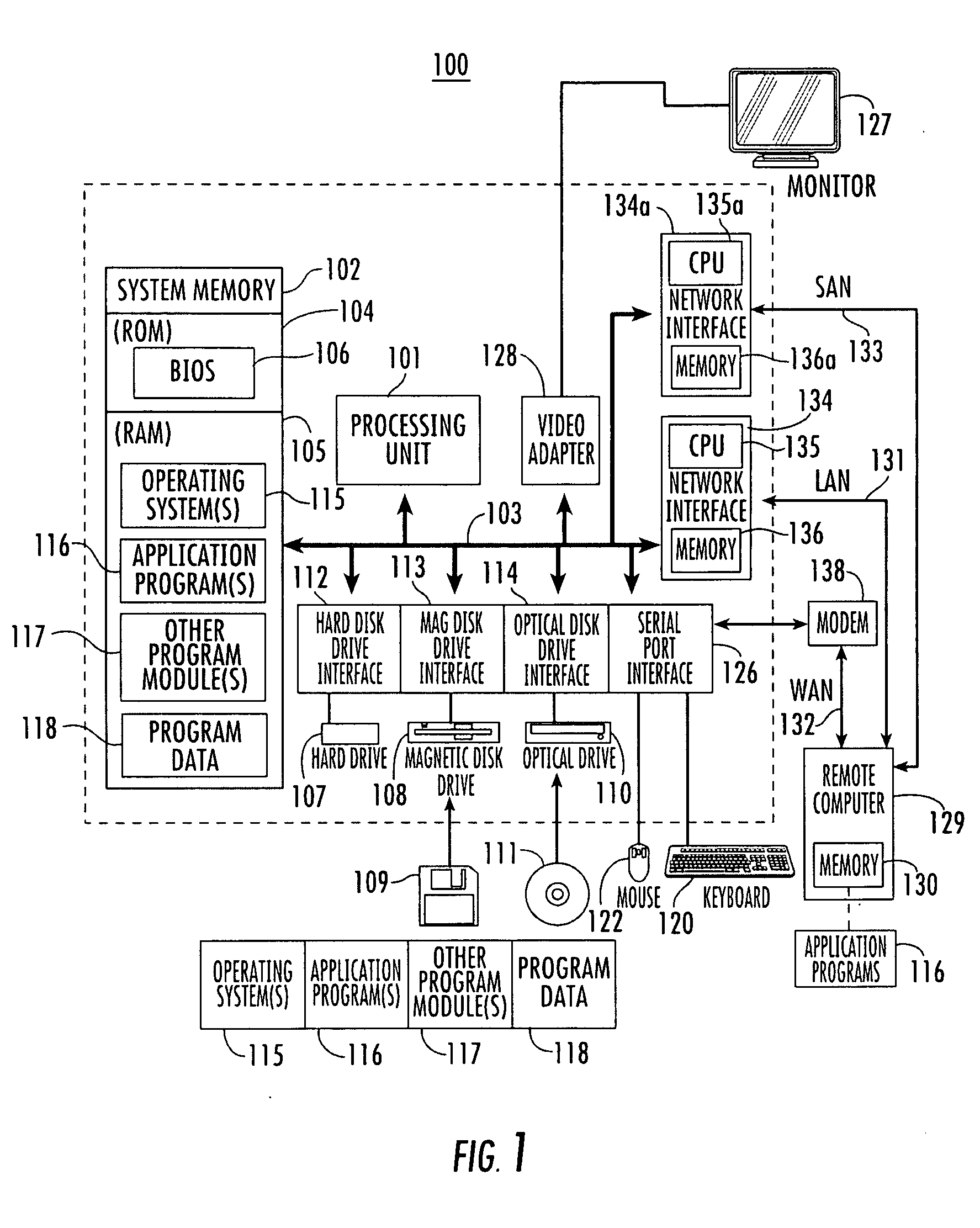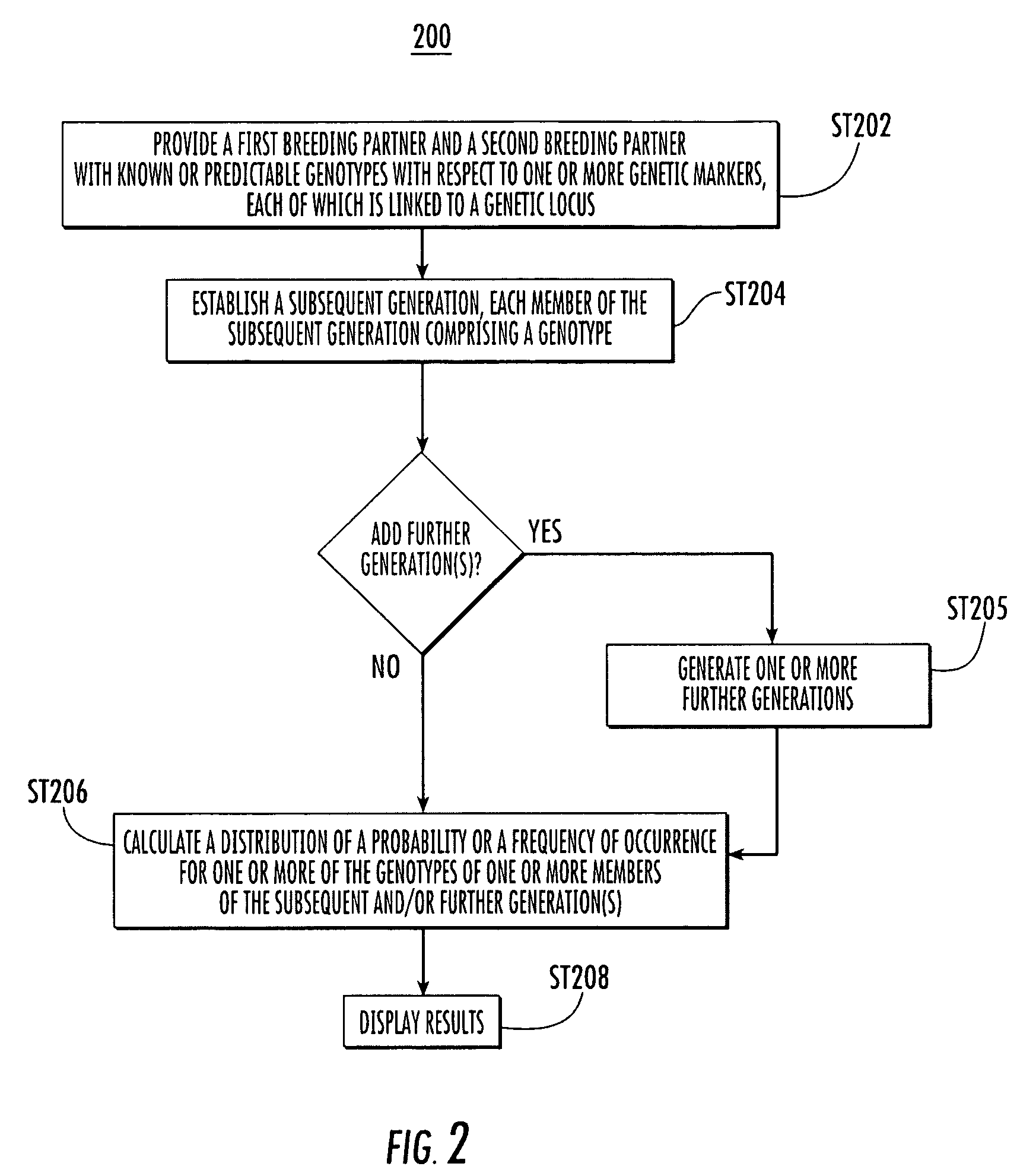Process for selecting individuals and designing a breeding program
a plant breeding and process technology, applied in the field of methods for improving the efficacy of a plant breeding program, can solve the problems of difficult mapping of loci that contribute to the expression of such traits, considerable resources must be devoted, and often complicated phenotypic selection
- Summary
- Abstract
- Description
- Claims
- Application Information
AI Technical Summary
Benefits of technology
Problems solved by technology
Method used
Image
Examples
example 1
Plant Material
Maize Parental material included two maize inbred lines: BFP57 and BMP34, both from the Stiff-Stalk Synthetic heterotic group. These lines were crossed with one another to produce F1 seed. F1 kernels were planted and the resulting F1 plants were self-fertilized to produce F2 seed. About 500 F2 kernels were planted. The resulting F2 plants were self-fertilized to produce F3 seed.
[0272]One and only one F3 kernel was harvested on each F2 plant, a commonly-used generation advancement procedure known as single kernel descent (SKD). The almost 500 F3 kernels so harvested were planted, and the resulting F3 plants self-fertilized to produce F4 seed. All F4 kernels produced on each F3 plant were harvested, keeping all F4 kernels harvested separated by F3 plant of origin, and thereby constituting F4 families.
[0273]About 10 kernels from each F4 family were planted to collect leaf tissue later used for DNA extraction and genotyping.
[0274]About 25 kernels from 250 unselected F4 fam...
example 2
Phenotypic Evaluations
Maize
[0275]Testcross seed from 229 F4 families was planted at 6 field locations in two-row plots. The experimental design was a lattice design with one replication. Several other hybrids, used as checks, were also planted in the same trials.
[0276]Seed from the same 229 F4 families was also planted at one additional field location, in one-row plots. Several inbred lines, used as checks, were also planted at the same location.
[0277]Traits measured included grain yield, grain moisture at harvest, root lodging, common smut incidence, and Helminthosporium incidence. Traits such as grain yield and grain moisture at harvest were only measured on testcross plots while others were measured either on testcross or F4 plots, depending on their occurrence.
example 3
Genotyping and QTL Mapping
Maize
[0278]DNA was extracted from bulks of leaves of about 10 F4 plants for each F4 family. DNA samples were genotyped using 88 polymorphic SSR's covering the entire maize genome. Several hundred SSR's had been previously run on the two parents of this segregating population, BFP57 and BMP34, in order to identify the polymorphic ones. The molecular marker genotypes obtained from analyses of F4 DNA bulks represented the genotypes of the F3 plants from which F4 families had been derived.
[0279]A molecular marker map was constructed using the commonly used software MapMaker and JoinMap. This molecular marker map had a total length of 1674 centiMorgans (cM), with a marker density of one marker every 19 cM.
[0280]Joint-analysis of genotypic and phenotypic data was performed using the software QTLCartographer and PlabQTL. Sixty-one QTLs were identified, for all traits. In particular, 14 QTLs were identified for grain yield, and 17 for grain moisture. QTLs are chara...
PUM
| Property | Measurement | Unit |
|---|---|---|
| Fraction | aaaaa | aaaaa |
| Fraction | aaaaa | aaaaa |
| Fraction | aaaaa | aaaaa |
Abstract
Description
Claims
Application Information
 Login to View More
Login to View More - R&D
- Intellectual Property
- Life Sciences
- Materials
- Tech Scout
- Unparalleled Data Quality
- Higher Quality Content
- 60% Fewer Hallucinations
Browse by: Latest US Patents, China's latest patents, Technical Efficacy Thesaurus, Application Domain, Technology Topic, Popular Technical Reports.
© 2025 PatSnap. All rights reserved.Legal|Privacy policy|Modern Slavery Act Transparency Statement|Sitemap|About US| Contact US: help@patsnap.com



